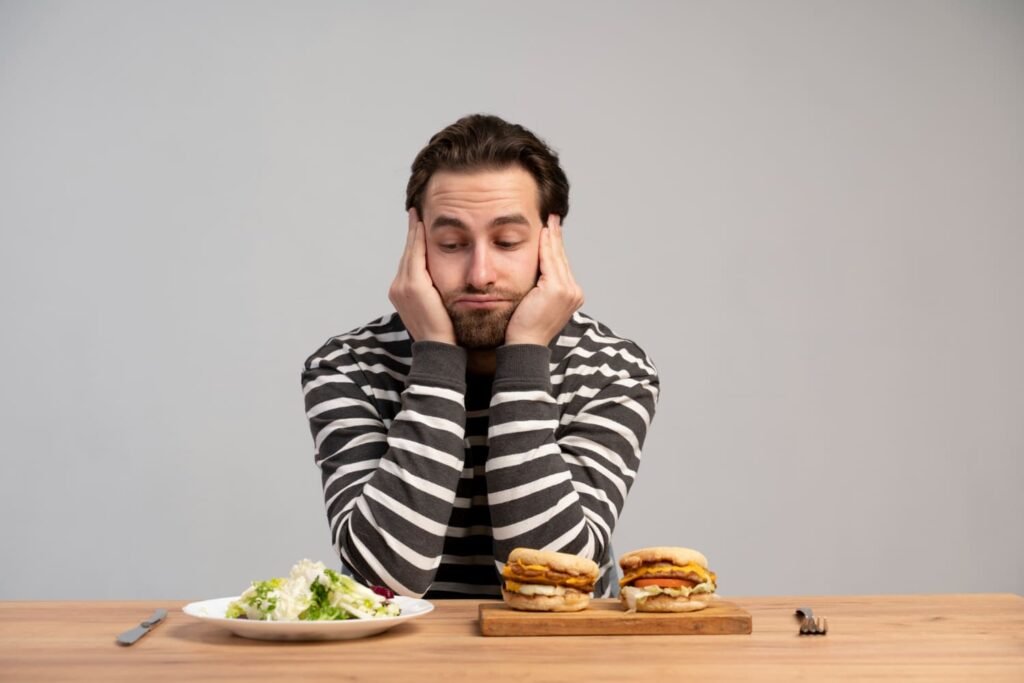The Best Fluffy Pancakes recipe you will fall in love with. Full of tips and tricks to help you make the best pancakes.
Cycling Nutrition Mistakes to Avoid
Common fueling errors that ruin performance or recovery.
Even strong cyclists often lose power, endurance, and recovery not because of weak legs—but because of nutrition mistakes. From starting rides on an empty stomach to forgetting recovery fuel, these errors can undermine months of training.

The good news? Once you understand the science of glycogen, hydration, and recovery windows, you can fix these mistakes quickly and ride stronger. This guide breaks down the four most common cycling nutrition mistakes and the smart fueling strategies that prevent them.
👉 For full fueling blueprints, check our Cycling Nutrition Guide.
Mistake #1: Skipping Pre-Ride Fuel – The Fasted Cycling Trap
Fasted cycling might seem like a fat-burning strategy, but it sabotages performance and training quality for most cyclists. Your liver stores only enough glycogen for 60-90 minutes of moderate cycling before depletion begins. Starting rides without proper fuel guarantees early fatigue and poor power output.
Why skipping pre-ride cycling nutrition fails:
- Glycogen depletion – liver stores empty within the first hour of cycling
- Protein breakdown – body starts consuming muscle tissue for energy
- Mental fatigue – brain function declines without steady glucose supply
- Training quality – can’t complete planned intervals or maintain target power
Smart pre-ride cycling fuel strategies: Eat easily digestible carbs 2-3 hours before rides – oatmeal with banana, rice cakes with honey, or cycling-specific energy foods that won’t cause digestive distress during exercise.
Mistake #2: Under-Fueling During Rides – The Bonk Generator
Under-fueling during cycling represents the most common performance mistake that transforms enjoyable rides into survival slogs. Most cyclists underestimate their carbohydrate needs, leading to glycogen depletion and the dreaded “bonk” that ruins training sessions and cycling adventures.
Consequences of inadequate cycling fuel intake:
- Glycogen depletion – muscle energy stores empty after 90-120 minutes
- Blood sugar crashes – sudden energy loss and mental fog during rides
- Performance decline – power output drops 20-40% when under-fueled
- Recovery delays – poor fueling extends post-ride fatigue and soreness
Proper during-ride cycling nutrition protocol: Target 30-60g carbs per hour on rides over 90 minutes using cycling energy snacks like gels, dates, bananas, or homemade rice cakes that digest easily during exercise.
Mistake #3: Ignoring Hydration and Electrolytes – The Cramp Creator
Cycling hydration mistakes cause more DNFs and miserable rides than most cyclists realize. Plain water dilutes blood sodium during long rides, while dehydration reduces blood volume and increases perceived effort. Smart electrolyte management prevents cramps, maintains power, and supports consistent performance.
How poor cycling hydration destroys performance:
- Hyponatremia – drinking only water dilutes critical blood sodium levels
- Reduced blood volume – dehydration increases heart rate and perceived effort
- Muscle cramping – electrolyte imbalances trigger painful cramping episodes
- Cognitive decline – even mild dehydration reduces focus and decision-making
Effective cycling hydration strategies: Sip regularly throughout rides using electrolyte drinks, especially during hot weather or intense training sessions when cycling fluid replacement becomes critical for safety and performance.
Mistake #4: Neglecting Post-Ride Recovery – The Adaptation Killer
Poor post-ride cycling nutrition wastes your training investment by missing the critical recovery window when nutrient uptake peaks. The 30-60 minutes after rides offer maximum glycogen synthesis and muscle protein repair rates. Delaying nutrition extends recovery time unnecessarily.
Why delayed post-ride cycling fuel hurts progress:
- Missed recovery window – nutrient uptake rates decline rapidly after exercise
- Slower glycogen replenishment – delays preparation for subsequent training sessions
- Impaired muscle repair – protein synthesis rates peak immediately post-exercise
- Extended fatigue – poor recovery nutrition prolongs soreness and tiredness
Optimal post-ride cycling recovery nutrition: Consume carbs plus protein within 30-60 minutes – cycling recovery smoothies, chocolate milk, or quinoa bowls provide ideal nutrient ratios for faster adaptation and reduced soreness.
Building Bulletproof Cycling Nutrition Habits
Consistent cycling nutrition requires systems that work even when you’re tired, rushed, or traveling to cycling events. Perfect execution matters less than consistent application of fundamental principles. Smart cyclists prepare backup plans and simple solutions for common nutrition challenges.
Sustainable cycling nutrition strategies:
- Meal prep basics – batch cook quinoa, rice, and cycling fuel ingredients weekly
- Emergency options – keep backup energy bars and electrolyte packets available
- Simple timing – eat something every hour during long rides, within 60 minutes post-ride
- Hydration habits – start rides hydrated and sip consistently throughout efforts
Long-term cycling nutrition success: Focus on consistency over perfection when building cycling nutrition habits that support your training goals and riding enjoyment rather than creating additional stress.





